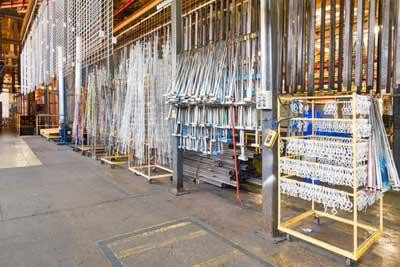Sandblasting Basics
Sandblasting is an interaction that includes compelling strong particles at high velocity utilizing compacted air onto a surface to smooth, engraving, or clean a hard surface. The frameworks used to sandblast surfaces have four fundamental parts: the air source (normally an air blower), the sandblasting impact pot, the seasoning media, and a residue authority. We utilize an enormous stall to house our shooting framework, with the residue gatherer to dispel any confusion air in the room during impact activities.
Security insurances while sandblasting. Sandblasting activities require specific wellbeing stuff to ensure the administrators. First is great hearing insurance, shoot goggles to ensure your eyes, and either an impact cover or impact provided air framework. The impact cover has a separating framework to give safe air to the administrator, and the provided air framework gives an inventory of natural air through an impact hood and protective cap. Rock solid gloves and an impact suit, cover or comparable garments will help shield the administrator from ricochet. Steel toed boots are additionally prescribed to shield from substantial items that may arrive on your feet.
Sandblasting has existed for quite a long time, and in light of current circumstances. In the event that you have rust or paint to eliminate, another steel surface to profile for covering, weld slag or staining, or a piece of apparatus or hardware, for example, a concrete blender, a vehicle pull flatbed or a tractor to repaint, sandblasting is the quick and powerful technique to set up the surface.
To start with, we should clear up the subject of sand. We don't utilize sand, don't stock it, when we talk about sandblasting we really mean media impacting, as we essentially utilize the mineral garnet as our impact media of decision, however we likewise utilize squashed glass, heating pop, corn cob, aluminum oxide, pecan shells, starblast, coal slag and plastic dabs, among different kinds of media.
There are two expansive fundamental uses for sandblasting. First is evacuation of some sort of pollution, for example, paint – bombing paint, wrong tone or kind of paint, rusted surfaces, cement or tar on a surface and comparative substances that exist on a surface. The surface is typically steel, however can be iron, aluminum, or other kind of construction.
The subsequent use is to set up a surface for a covering, for example, epoxy, paint or powder or e-covering. It is regularly the situation that the surface requirements the two kinds of essential use, expulsion of the old bombing paint and the profiling of the surface for better bond of the new covering. Steel with a profile offers much better covering attachment since the profiled surfaces has an approach to bolt the covering to the minuscule "pinnacles and valleys" of the impacted surface which improves the adequacy of the covering by improving the toughness of the covering. An end product of this utilization is the client who wants a uniform surface for restorative reasons yet won't make a difference another covering in the wake of impacting. This is generally hardened steel or aluminum, which don't rust, where they need to eliminate weld stamps and shroud that expulsion by shooting the whole surface to appear to be identical, or where they originator needs a profiled surface for appearance reasons.
There are different utilizations for sandblasting, for example, scratching or creative uses (consider mugs or mirrors with carved idioms or names on them), however in the modern impacting world, 90% of our work falls into the classes of expulsion of a material on a superficial level and setting up a surface for a covering.
Sandblasting gives quick and solid surface groundwork for some hard surfaces. Indigo has modern impacting experience that makes us specialists in the utilization of a wide range of impact medias, on many various sorts of substrates, all to give our clients the outcomes they need for improving their items.

Comments
Post a Comment